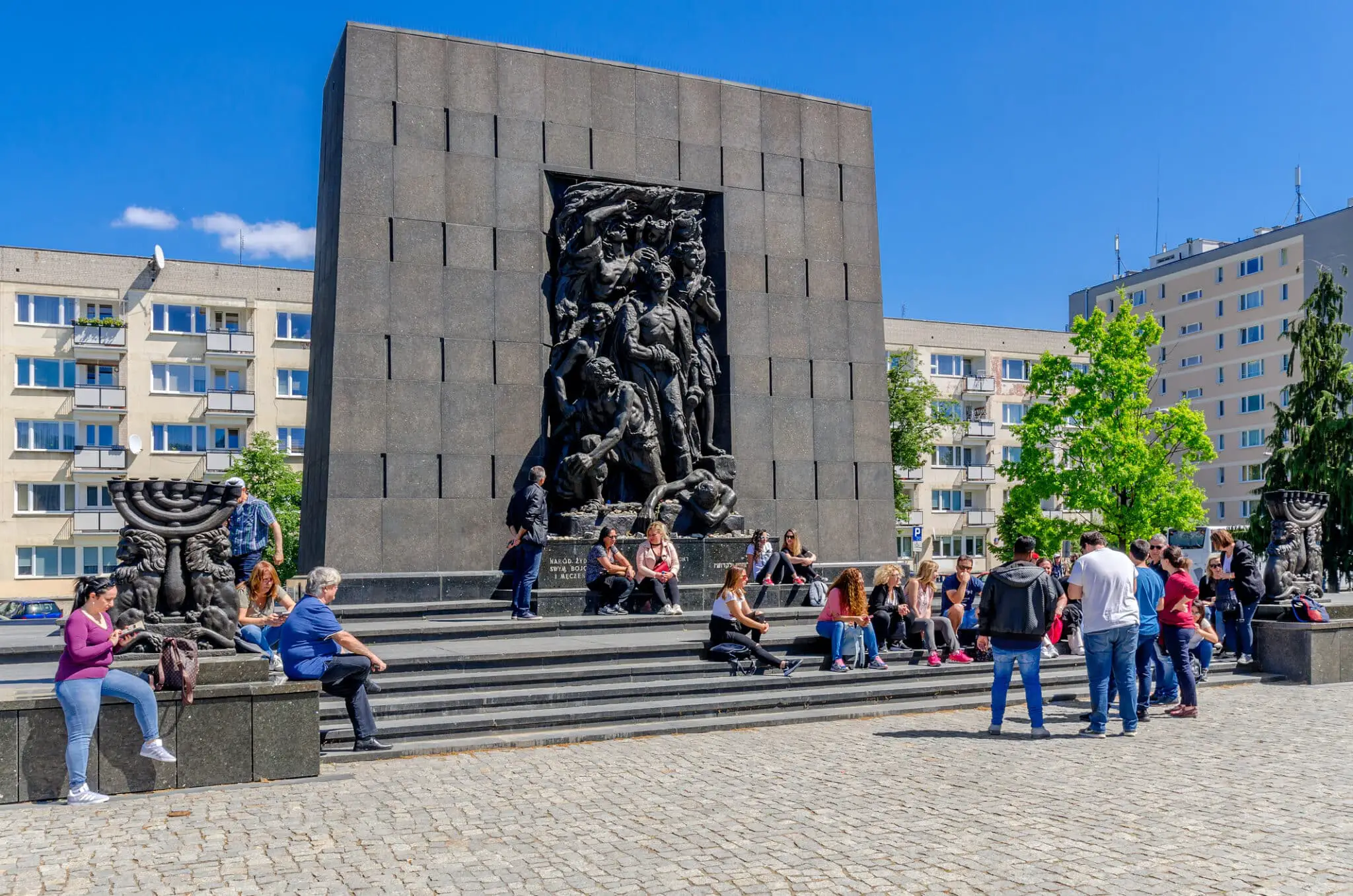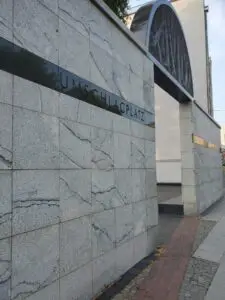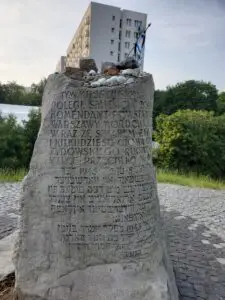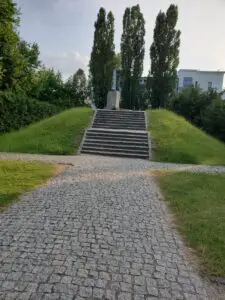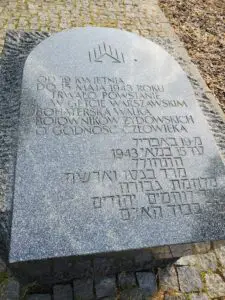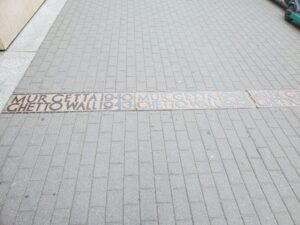All around Warsaw, there are reminders of the historic Jewish presence. Though Warsaw has experienced incredible change and development since WWII, the city has taken special care to ensure that the plight of the Warszavian Jewish community will never be forgotten. In the location of the former Warsaw ghetto are several memorials that educate passerbys of the atrocities that once took place where we now walk freely.
One such example is a series of monuments beginning on the corner of Ulica Anielewicza and Ulica Zamenhofa. It is aptly named the “Path of Remembrance” (in Polish: “Trakt Pamięci”) although it is better known in English as “The Memorial Route of Jewish Martyrdom and Struggle.”
The memorial route is concerned with Warsaw’s Jewish Heritage in general, and also with the Warsaw Ghetto Uprising in particular.
Finding and Following the Memorial Route of Jewish Martyrdom and Struggle

The street names themselves are of importance. Ulica Anielewicza refers to Mordechaj Anielewicz, the leader of the Jewish Fighting Organization and a key figure in the Warsaw Ghetto Uprising. Ulica Zamenhofa refers to Ludwik Zamenhof — an ophthalmologist (eye doctor) by trade, but a linguist by passion and best known as the creator of the language Esperanto. He had hoped that Esperanto would be simple enough to learn and speak that it would become a world language, helping to break down barriers and bring people closer together. Both of these men are internationally known for their devotion to the common good, but the ultimate common denominator is their identity as members of the Polish Jewish community who resided in the heart of Warsaw. At the intersection of these streets is the Polin Museum, dedicated to the history of Jews in Poland.
The Memorial Route of Jewish Martyrdom and Struggle is made of several memorial stones, each with information in Polish and Hebrew about the Ghetto Uprising and several told of key actors.
There are several challenges to trying to follow the path. One is that there are not really any good maps of it. One, which I only found after trying to fumble my way through the path, can be found here. It has lots of locations listed, yet little information on what is at each location. Another challenge is that the sites do not have English available. To make things more challenging, even if you have Polish comprehension skills that are still in progress, like mine, the letters are chiseled to the stone somewhat oddly and can be hard to read.
Nevertheless, I persisted. While I found myself wandering up and down streets and able to understand only some of the messages, the journey was most meaningful. I love walking in the footsteps of my ancestors in Warsaw and trying to learn from the city.
A Few Points of Interest on the Memorial Route of Jewish Martyrdom and Struggle
One of the most striking things I saw on the path was a former bunker on Ulica Miła which once housed much of the leadership of the Ghetto Uprising. A somber tone permeated the small area, consisting of a grass-lined stone path guiding viewers to a raised mound on which a monument stood. In pre-war Warsaw, Ulica Miła was a hub of Jewish life. During World War II, the bunker located on this street adopted the meaning of the fight in preservation of the Jewish people in hope that such times of prosperity would return. On 8 May 1943, during the Warsaw Ghetto Uprising (19 April – 15 May 1943), the bunker was discovered by the Nazis. Rather than to surrender and be subject to inevitable and unbearable torture, Mordechaj Anielewicz and several others ingested poison in a final act of resistance.
Suddenly, I noticed stones on top of the monument, and my breath caught in my throat. Jewish cemeteries can be easily distinguished by the presence of stones lining the top of gravestones placed by mourning loved ones. The origin of this tradition is shrouded in the haze of antiquity, but there are several possible explanations, my preferred of which is the fact that stones last longer than flowers, representing the immortality of memory. Visitors to this commemorative stone treat it with the same respect as a gravestone, which I found touching. After paying my own respects, I continued.
Another exceptionally striking point on the path was the Umschlagplatz Memorial. The word “Umschlagplatz” in German translates literally to “collection point” — a strategic use of language to dehumanize the over 300,000 Jews who passed through the so-called Umschlagplatz before being deported to the horrors of the Treblinka Extermination Camp, Chełmno Extermination Camp, or Auschwitz. The visual cues on the monument itself tell a story, such as through the colors as a reference to Jewish ritual robes (namely the black stripes on tallit) and the many depictions of trees (a destroyed forest to symbolize the devastation of the Jewish nation and a new tree to express renewed hope).
A third stop of note was Ulica Chłodna. During the time of the occupation, Ulica Chłodna was a bustling street reserved for the “Aryan” population. Above the heads of those free to stroll down Ulica Chłodna was a wooden bridge connecting the “small ghetto” (reserved for the relative elite) and the “big ghetto” (the majority remaining population). Though the bridge itself was only in use for six months in 1942, it became a symbol of the Warsaw Ghetto and was featured prominently in photographs as well as reconstructed for films. Today, an art installation remains, aptly named the “Footbridge of Memory” in the form of a pair of metal poles linked by fiber-optic cables that trace the shape of the former bridge with light.
Reflections on the Path of Remembrance
At the end of my journey, unlike the hundreds of thousands of Jews who had once lived under occupation in this area, I was free to leave the former ghetto. Though one can find reminders the occupation throughout Warsaw, I recommend a journey along the Memorial Route of Jewish Martyrdom and Struggle (Path of Remembrance) to all who visit the city. Together, we will be the living manifestation of pebbles on headstones, preserving the memories of the inhabitants of the Warsaw Ghetto for all generations to come.
You Might Also Like

Warsaw Museum of Computers and Games
Inconspicuously located in the underground passage of the Warsaw Electronic Exchange (Warszawska Giełda Elektroniczna), the nostalgic arcade glow of the Warsaw Museum of Computers and Games (Warszawskie Muzeum Komputerów i Gier) is just a ten-minute metro or tram ride from the city center. Though small in size, every inch of the museum space is packed […]

10 Essential Polish Authors: A Nation Preserved and Prospering in Words
Polish literature has long been central to the nation’s identity. Especially during periods when Poland did not exist as an independent state, language became both a carrier of national spirit and a form of resistance against assimilation. This centrality of words is reflected in the widespread tendency of Polish writers and artists to transform great […]
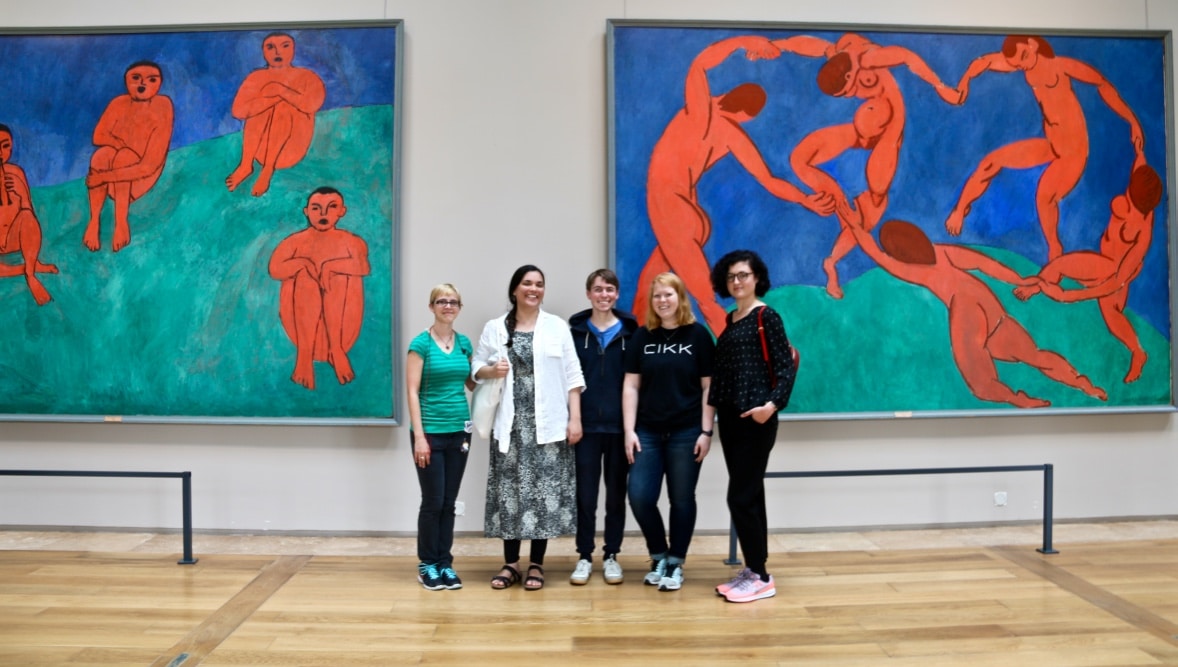
Museums as Self-Care
In 2018, doctors in Montreal began prescribing visits to the Montreal Museum of Fine Arts (MMFA) for patients experiencing depression, anxiety, and other health issues. This innovative approach to mental health treatment was launched under the initiative of the MMFA in collaboration with Médecins francophones du Canada (MFdC). The program allows physicians to provide patients […]
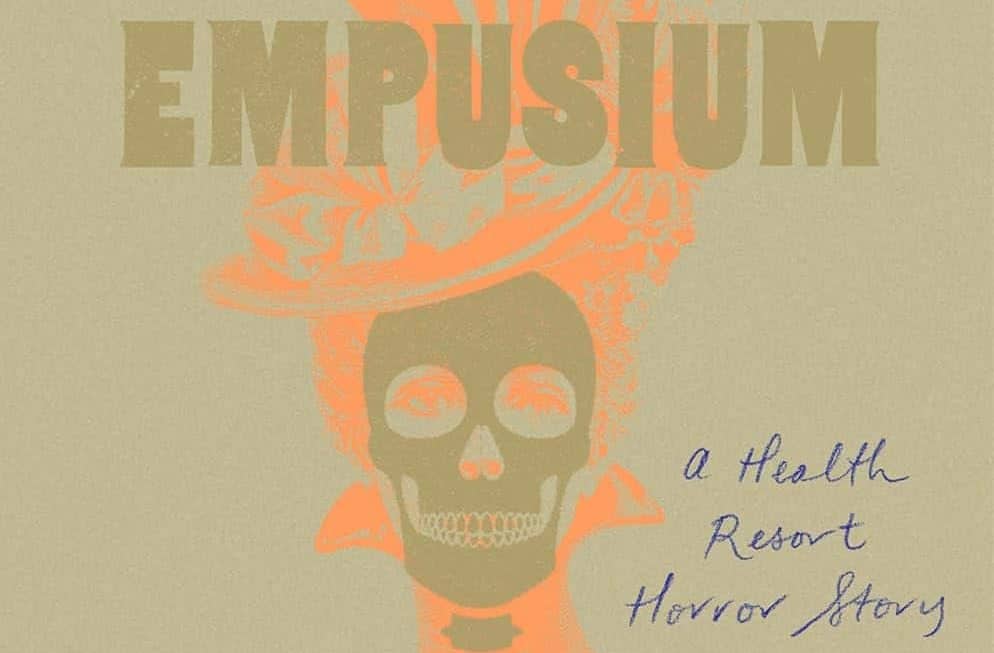
Book Review of The Empusium: A Health Resort Horror Story
The Empusium: A Health Resort Horror Story by Olga Tokarczuk, translated from Polish by Antonia Lloyd-Jones is an expertly woven folk horror story that grapples with the explosion of philosophies that overtook Europe at the turn of the last century as well as questions of gender and the ways in which we interpret the world […]

Chopin Museum and Rememberance, Warsaw
In Warsaw, large, elegant, and beautiful willow trees grace many of the parks within the city. These are the same willow trees that inspired many of the outstanding musical pieces of prodigy composer and native Pole, Frédéric Chopin. Signs of Chopin’s legacy, like the willows that inspired him, can also be seen across the city. […]


